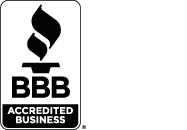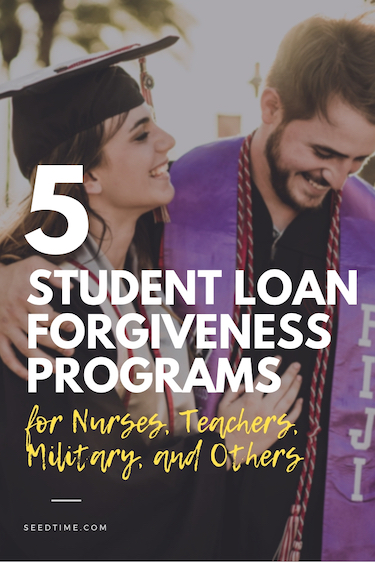
Lately, I have been talking to a lot of folks who are heavily burdened by their student loan debts – some of whom have over $100,000 in student loan debt.
And while I believe, according to scripture, we are to pay back our debts, if they are forgiven by the lender then we are off the hook.
So all this led me to do some digging about some of the little-known student loan forgiveness programs out there. It is amazing to me that these programs have seemingly been kept undercover. There are a large number of people out there who could really benefit from them.
They all have pretty specific and strict eligibility requirements, but hopefully, this article will serve as a starting point for some of you who may be eligible for some of these programs.
But even if you don’t qualify for any…
You might want to consider refinancing your student loans. According to some sources, the average savings by refinancing is $18,000. Is that not worth a couple hours of your time? And it really is a simple process if you use a site like Credible to help you with the refinancing.
Oh and if you know anyone who works in a public service job, nurses, law enforcement officers, teachers, military, or any of the others listed below, definitely share this with them – they will thank you for sure!
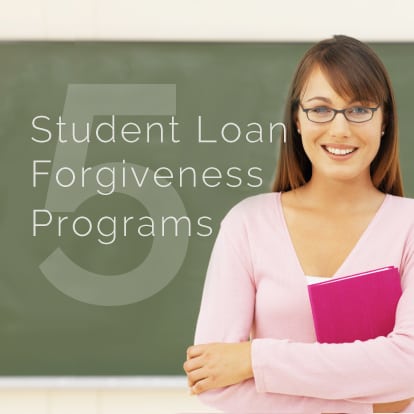
1. Public Service Loan Forgiveness (PSLF)
The PSLF Program is for individuals who work full-time in public service jobs. Under this program, borrowers may qualify for forgiveness of the remaining balance of their Direct Loans after they have made 120 qualifying payments on those loans while employed full time by certain public service employers.
The program forgives qualified federal student loans – by qualified they mean William D. Ford Direct Loans (including direct unsubsidized loans, direct subsidized loans, direct consolidation loans, and direct PLUS loans).
Eligibility requirements:
- Before any of your loans will be forgiven, you must make 120 on-time, full amounts, monthly payments on your direct loans.
- Only payments made after 10/1/2007 qualify.
- You must have been working full-time at a qualifying public service organization when the payments were made.
Learn More
2. Federal Perkins Loan Cancellation Program
This loan cancellation program is much more lenient in how much of your student loans it will cancel out. You can have up to 100% of your Federal Perkins loan forgiven in the following increments. For the first two years, you can have 15% of the original principal loan amount canceled each year. For years three and four, you can have 20% of the loans cancelled each year. For year five, you can have the final 30% of your loans canceled. Perkins loans may be partially or completely canceled if the borrower meets one of the following conditions.
Eligibility requirements:
Full-time teachers or service providers meeting one of the following conditions may be eligible to have up to 100% of their loans canceled:
- Up to 100 percent for five years of eligible service:
- Teachers:
- A teacher is someone (including, for example, a school librarian or guidance counselor) who provides elementary or secondary school students with direct services directly related to classroom teaching.
- Full-time nurse or medical technician.
- Full-time firefighter.*
- Full-time qualified professional providers of early intervention services for the disabled in a public or other nonprofit program under public supervision.
- Full-time faculty member at a tribal college or university.*
- Full-time speech pathologist with a master’s degree working in a Title I-eligible elementary or secondary school.*
- Librarian with a master’s degree working in a Title I-eligible elementary or secondary school or in a public library serving Title I-eligible schools cancellation.*
- Full-time law enforcement officers or corrections officers for a local, state, or federal law enforcement or corrections agency.
- Full-time attorney employed in a federal public or community defender organization cancellation.*
- Full-time employees of a public or private nonprofit child or family-services agency who provides services to high-risk children and their families from low-income communities.
- Teachers:
- Up to 100 percent for seven years (at a rate of 15 percent per year for the first six years and 10 percent for the seventh year) of eligible service:
- Full-time staff member in the education component of a Head Start program.
- Full-time staff member in the education component of a prekindergarten or child care program that is licensed or regulated by a state.*
- Up to 70 percent for four years (at a rate of 15 percent for the first and second years and 20 percent for the third and fourth years) of eligible service:
- AmeriCorps VISTA or Peace Corps volunteer.
*for service that includes Aug. 14, 2008, or began on or after that date.
Variations of Amount Canceled:
- Military service in the U.S. armed forces in a hostile fire or imminent danger pay area.
- Up to 50 percent for four years (at a rate of 12.5 percent per year) of eligible service for borrowers whose active duty service ended before Aug. 14, 2008.
- Up to 100 percent for five years of eligible service for borrowers whose active duty service includes or began on or after Aug. 14, 2008.
Learn more
3. Teacher Loan Forgiveness
For Direct Subsidized Loans, Direct Unsubsidized Loans, Subsidized Federal Stafford Loans, and Unsubsidized Federal Stafford Loans.
Under this program, if you teach full-time for five complete and consecutive academic years* in certain elementary and secondary schools and educational service agencies that serve low-income families, and meet other qualifications, you may be eligible for forgiveness of up to a combined total of $17,500 on your Direct Subsidized and Unsubsidized Loans and your Subsidized and Unsubsidized Federal Stafford Loans. (NOTE: If you have PLUS loans only, you are not eligible for this type of forgiveness.)
Eligibility requirements:
- You must not have had an outstanding balance on Direct Loans or Federal Family Education Loan (FFEL) Program loans as of Oct. 1, 1998, or on the date that you obtained a Direct Loan or FFEL Program loan after Oct. 1, 1998.
- The loan(s) for which you are seeking forgiveness must have been made before the end of your five academic years of qualifying teaching service.
- You must have been employed as a full-time, highly-qualified teacher for five complete and consecutive academic years, and at least one of those years must have been after the 1997–98 academic year.
- You must have been employed in an elementary school, secondary school or educational service agency that serves low-income students.
*If you were unable to complete a full academic year of teaching, that year may still be counted toward the required five complete and consecutive academic years.
Learn more
4. Hardship Loan Forgiveness
The entire loan will be canceled or forgiven based on the situation of the borrower or the student and these include the following:
Total and Permanent Disability (TPD) Discharge
A TPD discharge relieves you from having to repay a William D. Ford Federal Direct Loan (Direct Loan) Program loan, Federal Family Education Loan (FFEL) Program loan, and/or Federal Perkins Loan (Perkins Loan) Program loan or complete a TEACH Grant service obligation on the basis of your total and permanent disability. Before your federal student loans or TEACH Grant service obligation can be discharged, you must provide information to the U.S. Department of Education (ED) to show that you are totally and permanently disabled. ED will evaluate the information and determine if you qualify for a TPD discharge.
Learn more
Death Discharge
If you, the borrower, die, then your federal student loans will be discharged. If you are a parent PLUS loan borrower, then the loan may be discharged if you die, or if the student on whose behalf you obtained the loan dies.
The loan will be discharged if a family member or other representative provides a certified copy of the death certificate to the school (for a Federal Perkins Loan) or to the loan servicer (for a Direct Loan or FFEL Program loan).
Learn more
Discharge in Bankruptcy
This is not an automatic process—you must prove to the bankruptcy court that repaying your student loan would cause undue hardship on you and your dependents. You must file Chapter 7 or Chapter 13 bankruptcy!
The court uses this three-part test to determine hardship:
- If you are forced to repay the loan, you would not be able to maintain a minimal standard of living.
- There is evidence that this hardship will continue for a significant portion of the loan repayment period.
- You made good-faith efforts to repay the loan before filing bankruptcy (usually this means you have been in repayment for a minimum of five years).
Learn more
Closed School Discharge
You may be eligible for discharge of your Direct Loans and FFEL Program loans under either of these circumstances:
- Your school closes while you’re enrolled, and you do not complete your program because of the closure. Any federal student loan obtained to pay your cost of attendance at that school could be discharged. If you were on an approved leave of absence, you are considered to have been enrolled at the school.
- Your school closes within 120 days after you withdraw.
Learn more
False Certification of Student Eligibility or Unauthorized Payment Discharge
You may be eligible for a discharge of your Direct Loan or FFEL Program loan in these circumstances:
- Your school falsely certified your eligibility to receive the loan based on your ability to benefit from its training, and you did not meet the ability to benefit student eligibility requirements.
- Your eligibility to receive a loan was falsely certified because you were a victim of identity theft.
- The school signed your name on the application or promissory note without your authorization or the school endorsed your loan check or signed your authorization for electronic funds transfer without your knowledge unless the proceeds of the loan were delivered to you or applied to charges owed by you to the school.
- The school certified your eligibility, but because of a physical or mental condition, age, criminal record, or other reason you are disqualified from employment in the occupation in which you were being trained.
Learn more
Unpaid Refund Discharge
You may be eligible for a discharge of your Direct Loan or FFEL Program loan if you withdrew from school, but the school didn’t pay a refund that it owed to the U.S. Department of Education or to the lender, as appropriate. Check with the school to see how refund policies apply to federal aid at the school.
Only the amount of the unpaid refund will be discharged. Contact your loan servicer for more information.
Learn more
5. State and City Sponsored Loan Forgiveness Programs
There are loads of state-sponsored student loan forgiveness programs. In fact, there are way too many to list here. The good news is, the American Federation of Teachers (AFT) has compiled a searchable database of loan forgiveness programs, grants, awards and classroom donation programs. You can specify loan forgiveness, select your grade level, your subject area and state and you can see what student loan forgiveness and cancellation programs are available in your state. Your local school board should be able to provide you information on any county or city-funded forgiveness programs.
Additional Student Loan Assistance Programs
AmeriCorps: The AmeriCorps organization is the domestic arm of the Peace Corps, and it offers living stipends. And, they also offer education awards upon the successful service completion of your agreed term.
Nurse Corps: The Nurse Corps Loan Repayment Program supports registered nurses, advanced practice registered nurses, and nurse faculty by paying up to 85% of their unpaid nursing education debt.
Peace Corps: While serving, Peace Corps Volunteers are still responsible for any student loans they have. But, there may be benefits available, including deferment, partial cancellation, income-driven repayment, or forgiveness. Potential benefits depend on the type of loan you have (federal or private), the specific loan you have (Perkins, Stafford, Federal Direct, Federal Direct Consolidated, etc.), and what you intend to do after your service.
- Federal Loans: For Stafford, Perkins, direct and consolidated loans, you may be eligible for partial loan cancellation. Volunteers with Perkins loans may be eligible for a 15-70 percent cancellation benefit.
- Private Loans: If you have a private loan, you will need to contact your loan servicer to see if there are any benefits.
- Public Service Loan Forgiveness (PSLF): If you are working full-time for a qualifying employer, PSLF forgives the remainder of certain federal loans after 120 monthly payments are made under a qualifying repayment plan, your payments can be as low as $0 per month while volunteering.
Military Service: The Student Loan Repayment Program (SLRP). Under the Student Loan Repayment Program, when you enlist the Army will pay back up to $65,000 in qualified education loans, the Navy up to $65,000 and the Coast Guard up to $10,000 (per year for 6 years for repayment of student debt). The military services have unique student loan repayment programs designed to help recruit and retain active duty and reserve personnel, including both officers and enlisted.
Did you qualify for any?
I hope you did, but if not you should consider refinancing your student loans. According to some sources, the average savings by refinancing is $18,000. Check out Credible if you are interested in learning more.
If you know anyone burdened under student loan debt and may be eligible for these programs let them know!

